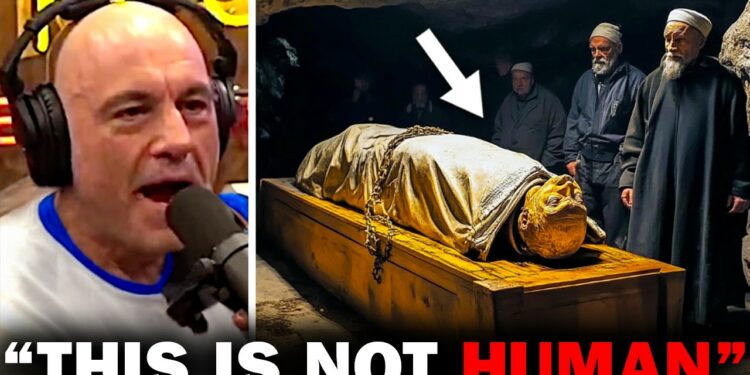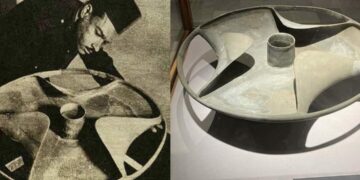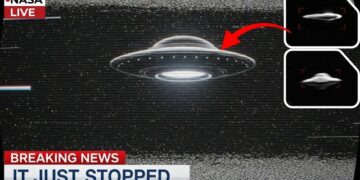Ancient steps have been uncovered at the famous Siloam Pool in Jerusalem, a site of deep importance in both the New and Old Testaments. For 2,000 years, a silver scroll lay hidden beneath Jerusalem’s streets, holding the oldest biblical text ever found, predating the Dead Sea Scrolls by 400 years. Its etched words, the same blessing still recited in synagogues and churches today, read: “May the Lord bless you and keep you.” When archaeologists unrolled this delicate artifact from an ancient tomb, they reshaped biblical history overnight. This is just one of ten discoveries that have stunned experts.
The Silver Scrolls That Rewrote Biblical History
Imagine holding an artifact so fragile that one wrong move could erase evidence of scripture from 2,700 years ago. In the 1970s, archaeologists excavating Jerusalem’s Ketef Hinnom tombs found two tiny silver scrolls, each smaller than a pinky finger. For three years, specialists worked under microscopes to unroll these paper-thin metal sheets. The tension was palpable—would the text survive or turn to dust? When the scrolls revealed their secrets, scholars were astonished. Etched into the silver were words from the Book of Numbers, the priestly blessing beginning, “May Yahweh bless you and keep you.” Dated to around 600 BCE, these scrolls became the oldest biblical text ever discovered, predating the Dead Sea Scrolls by four centuries. Every assumption about when biblical passages were first written was upended.
Remarkably, these weren’t ceremonial objects stored in a temple but personal amulets worn against the skin, showing that ordinary people incorporated scripture into daily life centuries earlier than scholars thought. The tombs, with their massive 9-foot stone thresholds and multiple chambers, belonged to Jerusalem’s elite. You can almost sense the ancient perfumes and burial spices that once filled these spaces, feel the cool limestone, and hear the mourners’ echoing footsteps as they placed these scrolls with their loved ones. This find forces us to rethink when biblical texts first circulated. If these passages existed in written form nearly six centuries before Christ, what other scriptures might have been recorded earlier? Could the Bible also guide archaeologists to more hidden treasures beneath Jerusalem’s streets?
The Bible as an Archaeological Treasure Map
For over a century, archaeologists have tested the idea of using biblical passages to locate excavation sites in Jerusalem, with astonishing success. In 1913, Jewish archaeologist Raymond Weill used biblical verses to find King David’s tomb in Jerusalem’s oldest quarter. The method is simple: identify locations mentioned in scripture, analyze geographical details, and dig where the text suggests. When the Bible describes King Hezekiah extending Jerusalem’s walls, archaeologists excavate those areas and often uncover fortifications from his reign. In 1880, a boy chasing a frog stumbled upon Hezekiah’s Tunnel, a 1,750-foot water channel carved through bedrock, exactly where 2 Kings and 2 Chronicles placed it. A pottery fragment near the Temple Mount mentioned a “House of Yahweh,” possibly Solomon’s Temple. In 2004, archaeologists followed biblical descriptions to locate the massive Siloam Pool, complete with ritual steps matching Jewish purification practices. Touching these stones connects you to surfaces described in texts thousands of years old, while Hezekiah’s Tunnel still carries cool water as it did during Assyrian sieges.
The Talpiot Tomb Controversy
In 1980, construction workers in East Jerusalem accidentally broke into a first-century tomb, sparking global debate decades later. Inside were ten limestone ossuaries (bone boxes), one inscribed with “Jesus, son of Joseph,” alongside others labeled Mary, Matthew, and “Judah, son of Jesus.” The implications were staggering—could this be the tomb of Jesus of Nazareth? If so, it would challenge Christianity’s claim of bodily resurrection. Filmmaker Simcha Jacobovici’s 2007 documentary The Lost Tomb of Jesus argued the name combination was statistically improbable, suggesting this was Jesus’s family tomb. However, most archaeologists dismissed the claims. Names like Jesus and Joseph were common in first-century Judea, appearing in about 25% of male burials. DNA tests on ossuary residue only showed the individuals weren’t maternally related, not that they were Jesus or Mary Magdalene. The tomb matched many wealthy Jerusalem family tombs, with no unique link to Jesus’s Galilean followers. While the controversy shows how a single find can ignite debate, mainstream scholars reject any connection to Jesus.
The Search for Solomon’s Temple
According to the Bible, King Solomon built a magnificent temple in Jerusalem around the 10th century BCE, adorned with gold and precious stones. Yet, no stone has been conclusively tied to this legendary structure. The challenge lies in its location on the Temple Mount, now home to the Dome of the Rock and Al-Aqsa Mosque, where religious sensitivities prevent comprehensive excavation. Archaeologists rely on peripheral evidence or debris from limited construction projects. A pottery fragment near the Temple Mount mentions a “House of Yahweh,” possibly Solomon’s Temple. Excavations at Tel Motza revealed a 9th-century BCE temple with features similar to biblical descriptions of Solomon’s Temple. The Temple Mount Sifting Project, examining soil removed during construction, recovers artifacts from the First Temple period, hinting at what lies beneath. The Babylonian destruction in 587 BCE and Herod’s Temple Mount expansion likely repurposed any remaining materials, deepening the mystery.
The Mystery of King David’s Tomb
For centuries, pilgrims have visited a site on Mount Zion, believed to be King David’s tomb. However, the Bible states David was buried in the City of David, south of Jerusalem’s Old City walls. The Mount Zion site, with Gothic architectural elements, dates to the Crusader period, not David’s era. Excavations in the City of David uncovered monumental tombs from the First Temple period, matching the biblical timeline and location. One complex, T1, features sophisticated stonework consistent with royal Judahite tombs. The Mount Zion tradition emerged during the Crusader era and persisted, even after 1967 when the Western Wall became accessible. This discrepancy shows how sacred traditions can diverge from archaeological evidence.
The Church of the Holy Sepulchre
The Church of the Holy Sepulchre, revered as the site of Jesus’s crucifixion, burial, and resurrection, has a complex archaeological history. Emperor Hadrian built a temple to Venus there in 135 CE, possibly to obscure a site venerated by early Christians. Emperor Constantine demolished it in the 4th century, building a church after his mother Helena identified the site as Jesus’s tomb. Excavations uncovered a 1st-century limestone quarry converted into gardens and tombs, matching Gospel accounts of Jesus’s burial in a rock-cut tomb in a garden. Geological analysis confirms the site was outside Jerusalem’s walls during Jesus’s time, as required for crucifixion sites. In 2016, researchers accessed the shrine covering Jesus’s tomb, uncovering an original limestone surface possibly untouched since the first century. While definitive proof is elusive, the evidence strongly supports the traditional identification.
The Pilgrims’ Road
Beneath modern Jerusalem lies a 600-meter limestone road from the Siloam Pool to the Temple Mount, buried after the city’s destruction in 70 CE. Built around 31 CE under Pontius Pilate, this grand thoroughfare used massive limestone slabs arranged in a step pattern for pilgrims ascending to the temple during festivals. Coins beneath the stones date its construction, and shops lined its sides, serving religious visitors. Walking its intact slabs today, you tread where pilgrims, possibly even Gospel figures, once walked. The road’s story ends in tragedy, buried under debris from the Roman destruction in 70 CE.
The Drainage Channel: Last Refuge of a Dying City
During Jerusalem’s fall in 70 CE, residents fled into a drainage system beneath the Pilgrims’ Road to escape Roman soldiers. Archaeologists found cooking pots with charred food, oil lamps, coins from the Jewish revolt, and a Roman sword in its scabbard. A crude stone carving of a five-branched menorah, possibly by someone who saw the temple’s menorah, is among the earliest depictions of this sacred object. These artifacts, corroborated by historian Josephus, preserve evidence of Jerusalem’s final hours.
The Ancient Moat: Jerusalem’s Forgotten Defense
Recent excavations in the Givati parking lot uncovered a massive trench, 9 meters deep and 30 meters wide, carved through bedrock. Dating to the Middle Bronze Age and used through the First Temple period, this moat protected Jerusalem’s northern approach, showcasing advanced engineering. Soil analysis revealed it collected rainwater, serving as both a defensive and water management feature. Misidentified by archaeologist Kathleen Kenyon in the 1960s as a natural valley, it confirms biblical references to a defensive “millo.”
Temple Mount Excavations: Controversy and Discovery
The Temple Mount, revered by Jews, Muslims, and Christians, is archaeology’s most contested site. Political sensitivities limit excavation, forcing archaeologists to study peripheral areas or debris from construction. Herodian architecture, ritual baths, and massive foundation stones have been documented. The Temple Mount Sifting Project recovered artifacts like a seal impression with the name Gedaliah, son of Pashur, from Jeremiah 38:1, and evidence of ancient parasites, linking scripture to daily life. Innovative techniques like ground-penetrating radar continue to uncover history without digging, adding to this contested puzzle.























